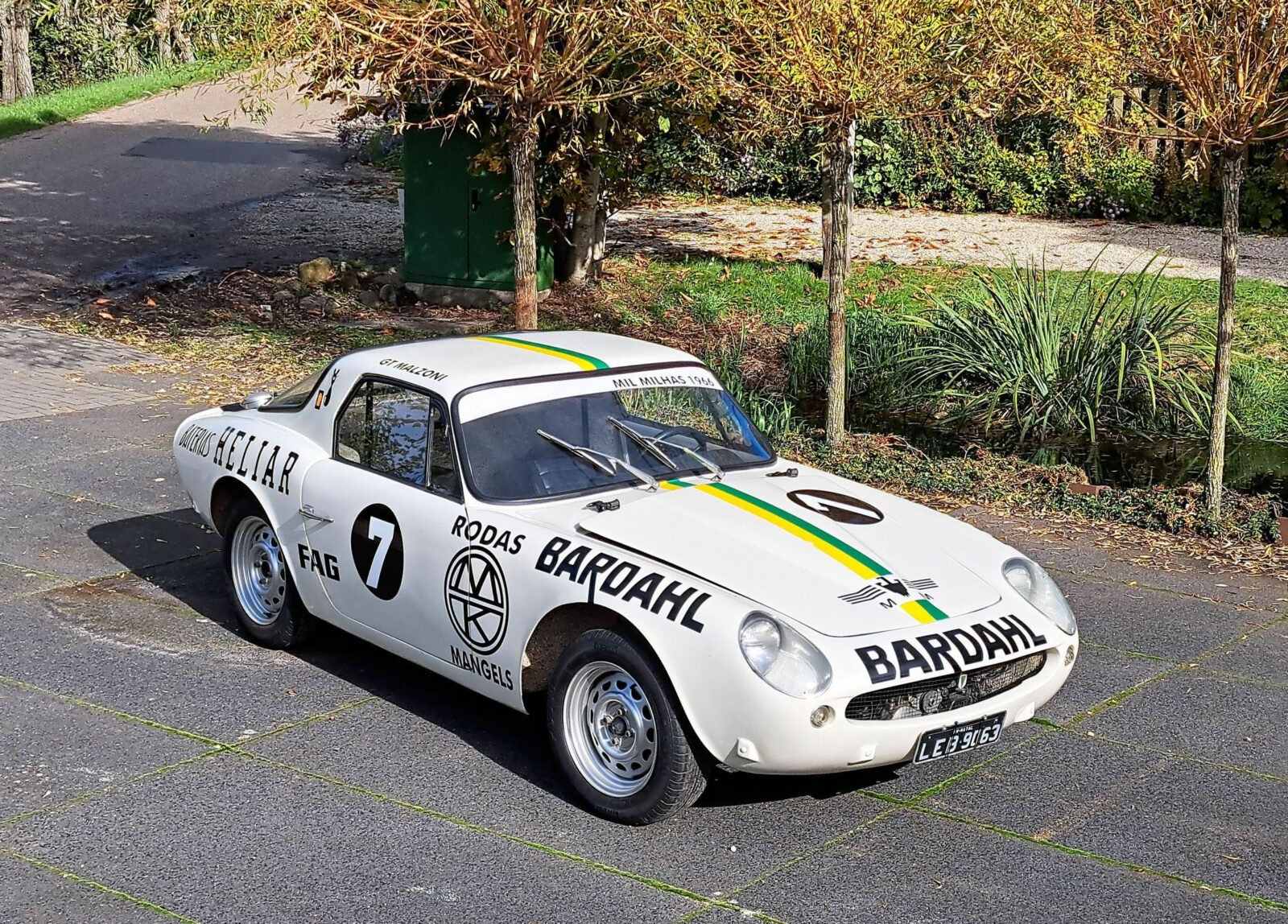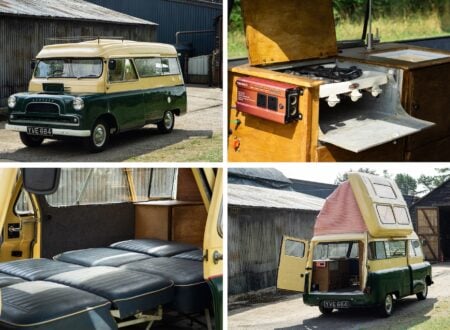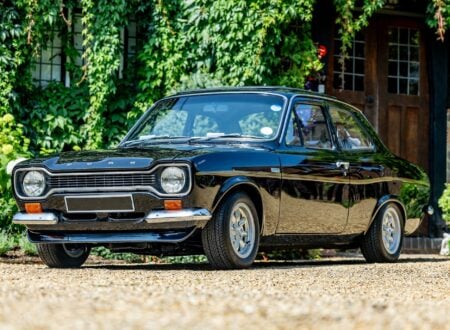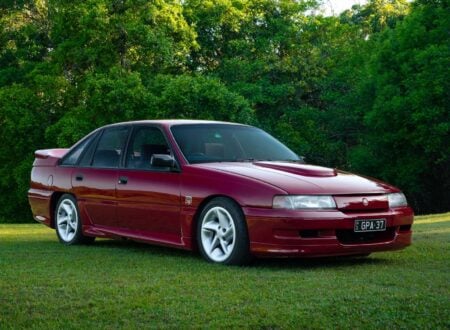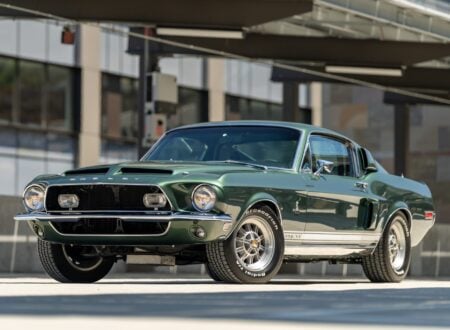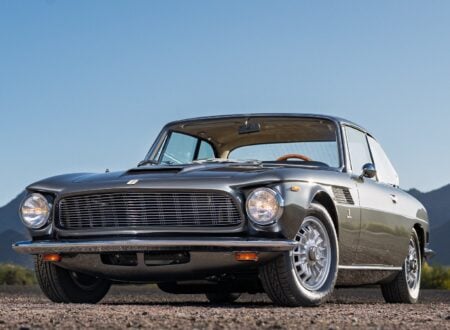This Malzoni GT is one of just three fiberglass-bodied racing prototypes made. In 1966 it became one of the most famous cars in Brazil when drivers Jan Balder and Emerson Fittipaldi, then just 19, drove a David vs Goliath race at the Mil Milhas at Interlagos – almost winning the event outright.
The Malzoni GT had been developed in Brazil on the chassis and running gear of the DKW-Vemag Belcar, a simple car with a two-stroke 1,000cc engine driving the front wheels. The Malzoni was developed by Italian-Brazilian sports car builder Rino Malzoni, and it would become one of the most successful Brazilian-built racing cars of the era.
Fast Facts – The Ex-Emerson Fittipaldi Malzoni GT
- The Malzoni GT was developed by Rino Malzoni, a naturalized Brazilian citizen who had been born in Italy. He developed his first car in 1963 on his farm near São Paulo, basing it on the DKW-Vemag Belcar chassis and running gear.
- Malzoni significantly modified the engine and suspension for improved performance, early versions had steel bodies but three racing prototypes were made with lightweight fiberglass bodies that significantly helped the power-to-weight ratio.
- The sleek styling of the Malzoni GT was strongly influenced by the Italian sports cars of the time, with a distinctly Brazilian flavor. The car would later be evolved into the Puma series of Brazilian sports cars.
- The Malzoni GT would become a cultural touchstone in 1966 at the Mil Milhas (1,000 Mile Race) at Interlagos where a pair of Brazilian drivers led for most of the event, not falling to third until the last few laps when the engine began to fail and was running on just two of its three pistons.
Building The Malzoni GT
The Malzoni GT a series of successful road and racing cars built by Rino Malzoni, an Italian who had immigrated to Brazil as a child with his family who established a coffee farm in Matão, in the state of São Paulo.
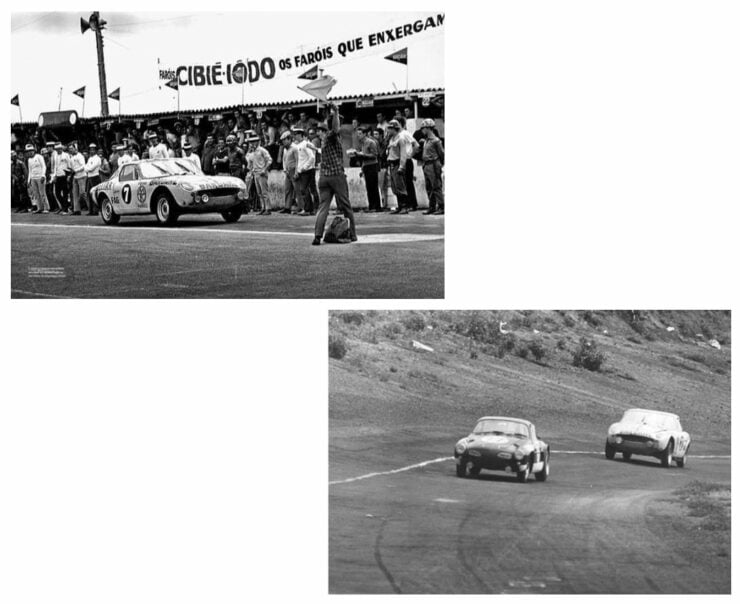

Malzoni had initially become a lawyer however he soon discovered it wasn’t his true passion, he spent countless hours in his uncle’s automotive workshop in the local town and learned the ropes.
Before long his was customizing cars, like a Ford Model A and an Austin A90 Atlantic, he soon graduated to working on more illustrious cars like a BMW 328 and a 1952 Maserati coupé into which he transplanted the drivetrain of a Ferrari 250 Testa Rossa.
Malzoni developed his own sports car based on the chassis of a 1.0 liter two-stroke DKW with 50 bhp. It may not sound like much but it was notably more than the ~30 bhp of the Volkswagens of the period.
The DKW had a separate chassis and body, allowing a new body to be constructed and fitted – creating the Malzoni GT which was unveiled in 1963.
This was soon followed by the Malzoni GT Type II, the Type III, and the Type IV, all incorporating the many lessons that were being learned by Malzoni and his team along the way.
The early steel bodied cars soon made way for fiberglass, as it was far cheaper and easier to work with, and it was much lighter which helped with performance.
The Incredible 1966 Mil Milhas
One of the most prestigious races in Brazil at the time was the Mil Milhas, it was essentially a 1,000 mile endurance race that took place at Autódromo José Carlos Pace, better known as Interlagos, in the city of São Paulo.
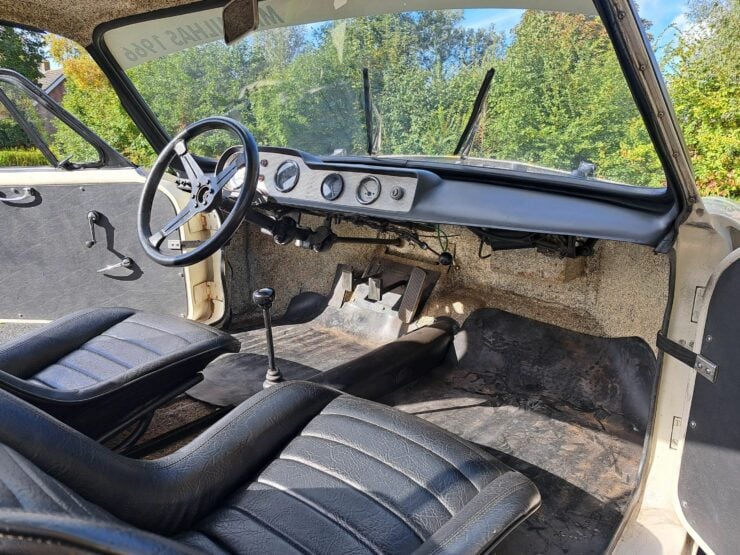

It would typically be foreign cars that would win the Mil Milhas, sometimes with Brazilian drivers, but almost always in cars from far across the Atlantic. In 1966 this was all turned on its head when Brazilian racing drivers Jan Balder and a 19 year old Emerson Fittipaldi arrived at the circuit with their Malzoni GT.
The car was a little down on displacement compared to its competitors, with a 981cc three-cylinder two-stroke producing its 50 bhp. Power was sent to the front wheels via a 4-speed transaxle, and the car had front disc brakes, rear drums, and a lightweight fiberglass body.
Against all odds, Balder and Fittipaldi ran away at the head of the field and led for almost the entire race. The Brazilian fans were borderline hysterical at this turn of events, and understandably so, as so few had seen a Brazilian car driven by Brazilian drivers beating the field.
Sadly it was not to be. Just a few laps before the checkered flag the engine began to misfire, they dove into the pits but there was nothing that could be done, the third cylinder wasn’t working and so the car rejoined the circuit and finished in third place running on two cylinders.
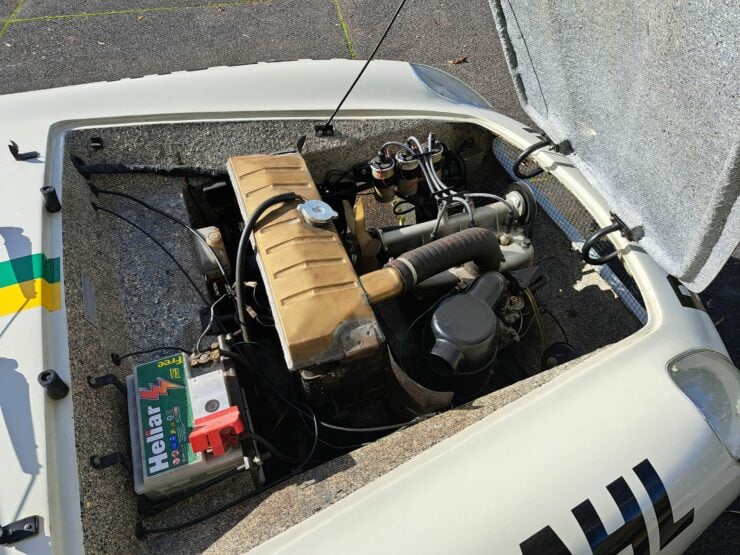

Despite the disappointment the fans were beside themselves to see Balder and Fittipaldi on the podium, that night it seemed like the entire city of São Paulo was celebrating a Brazilian win rather than “just” a third place.
“This race car is a DKW Malzoni, a car I drove in 1966…. co-driving with my friend Jan Balder. We raced this DKW Malzoni GT at the 1966 Brazilian Mil Milhas at Interlagos, and we lead most of the race, up to a few laps from the end when, due to a mechanical issue, we had to do an extra pitstop. We still finished 3rd overall – I was 19 years old!” – Emerson Fittipaldi writing about this Malzoni GT.
Three years later in 1969 Fittipaldi would leave for Europe where he would rise up through the ranks of Formula 2. He joined the Lotus Formula One Team in 1970 as the third driver. He moved up to lead driver for 1971 and just a year later in 1972 he would win the Formula One World Championship.
Then a couple of years later in 1974 he won the Championship again just to show it wasn’t fluke the first time.
Above Video: This is a film about the world of motor racing in 1972, covering the Formula One season and Fittipaldi’s win.
The 1966 Malzoni GT Shown Here
The car you see here is inarguably the most famous of the 43-45 examples of the Malzoni GT that were built before the Puma GT and its stablemates took over.
As you read in the introduction, this is one of just three racing prototypes that were built in ultralight form, with fiberglass bodies and very minimally-equipped interiors to keep them svelte. One of these cars was fielded by the Vemag Racing Team, a Brazilian outfit that contested many South American races.
The car is now being offered for sale in its 1966 Mil Milhas livery out of the Netherlands with an asking price of €96,500 or approximately $103,454 USD. If you’d like to read more about it or register your interest you can visit the listing here on Kucarfa.
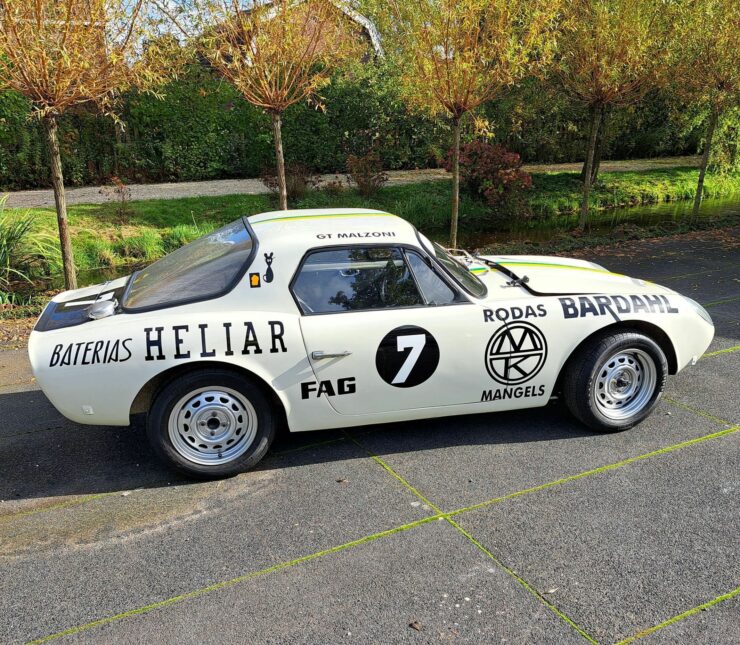
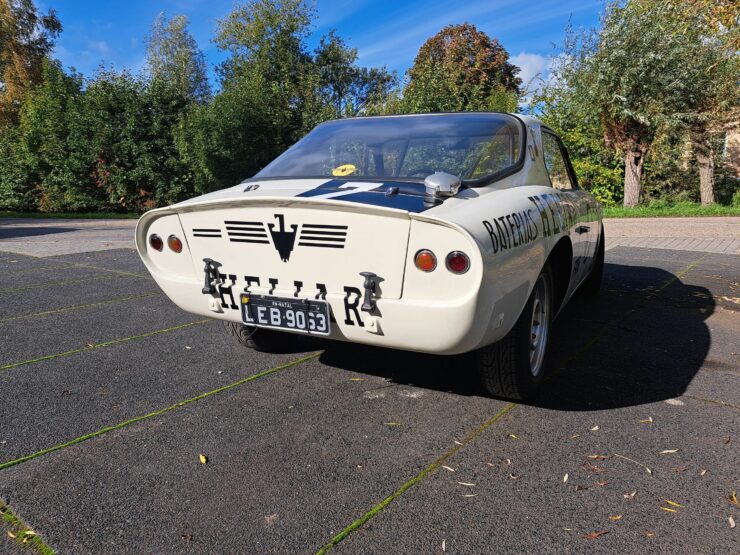

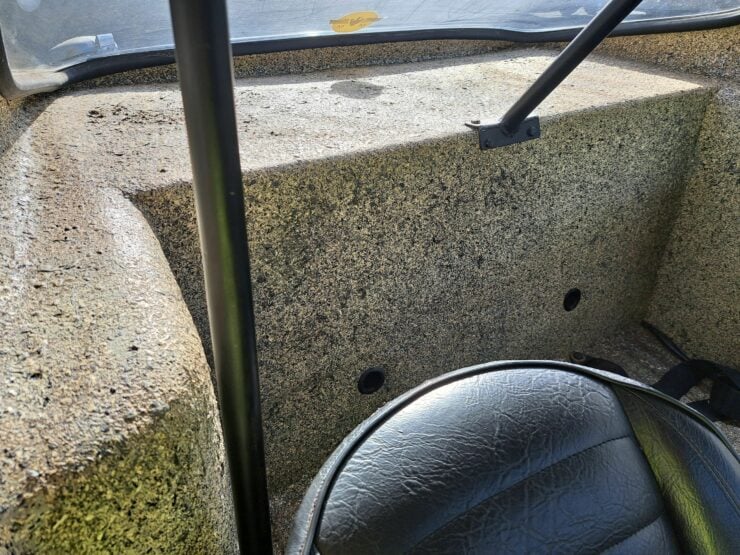
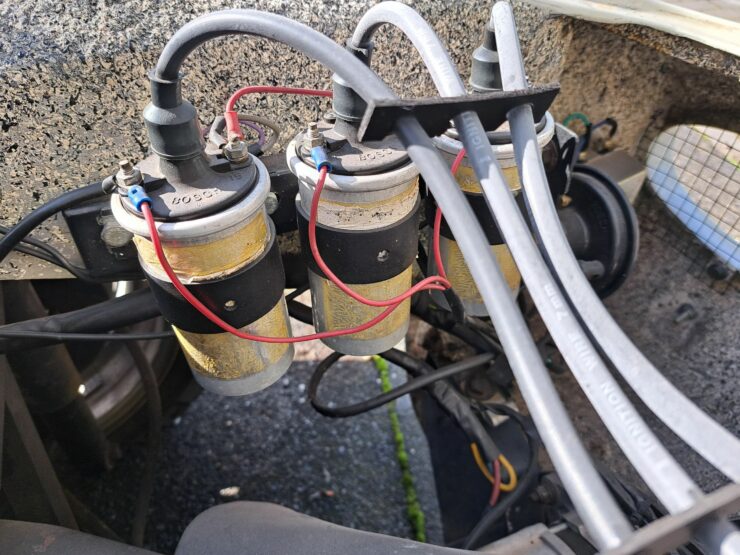
Images courtesy of Kucarfa

